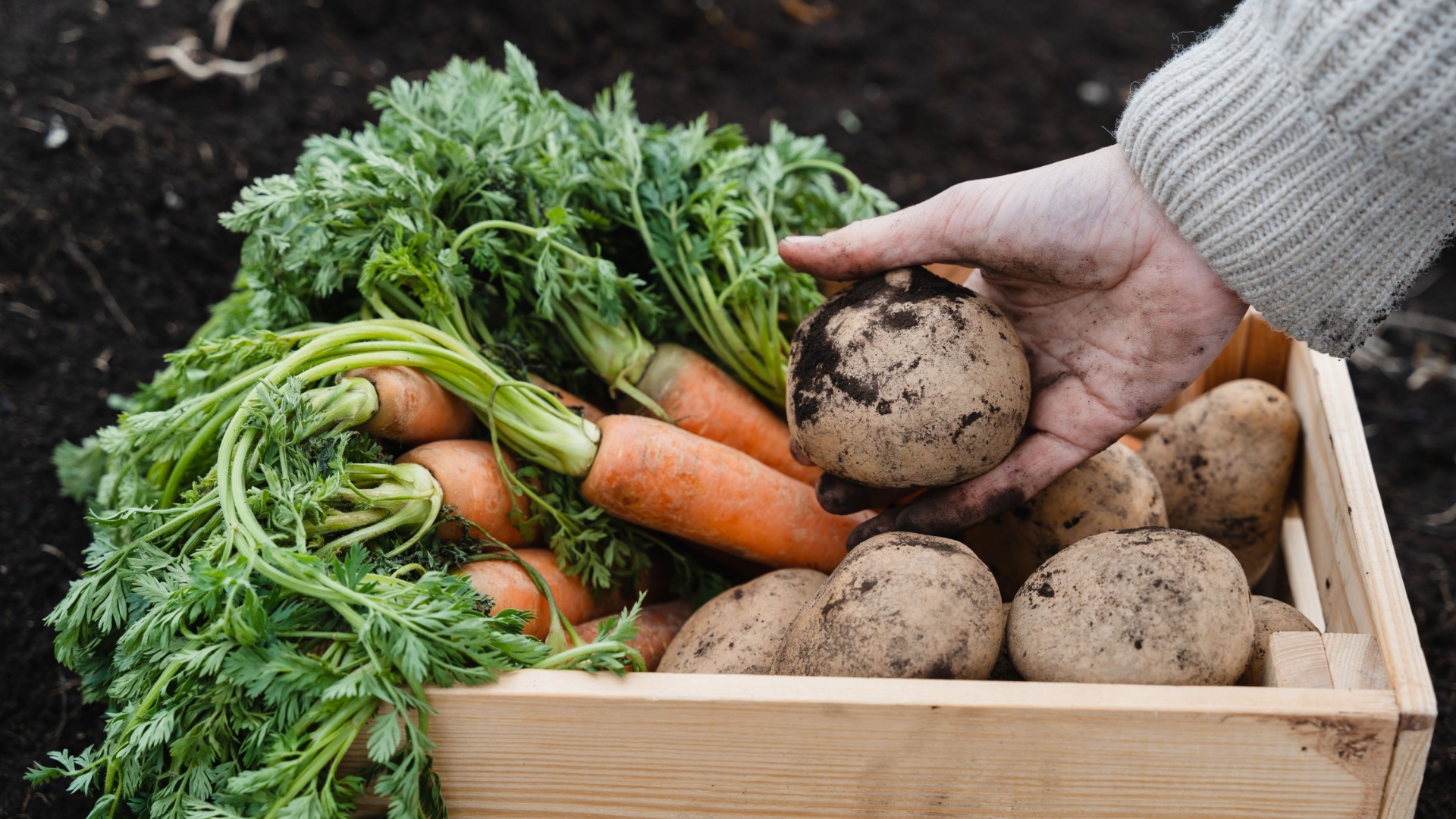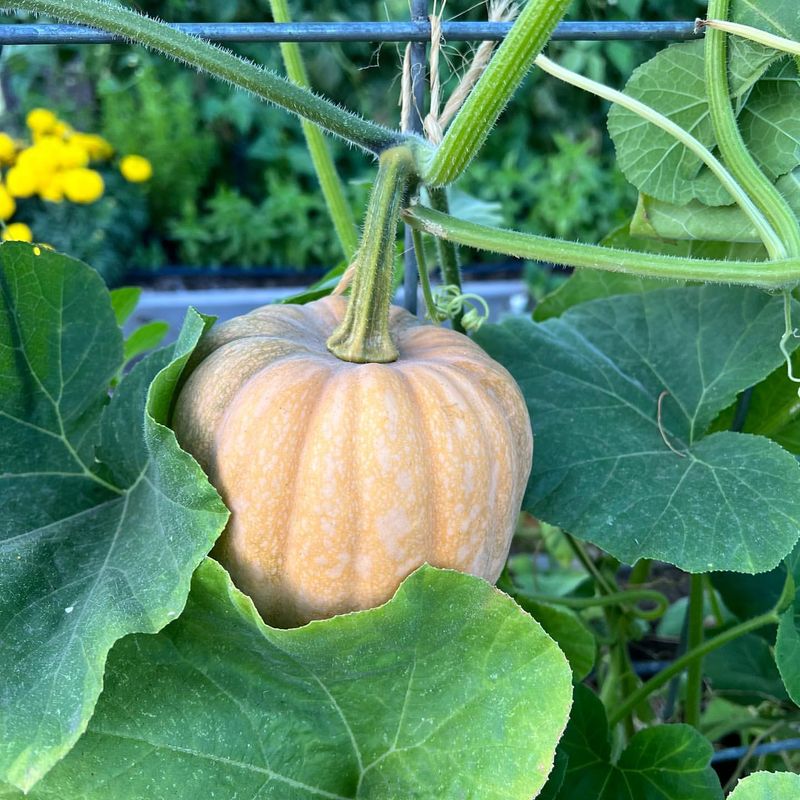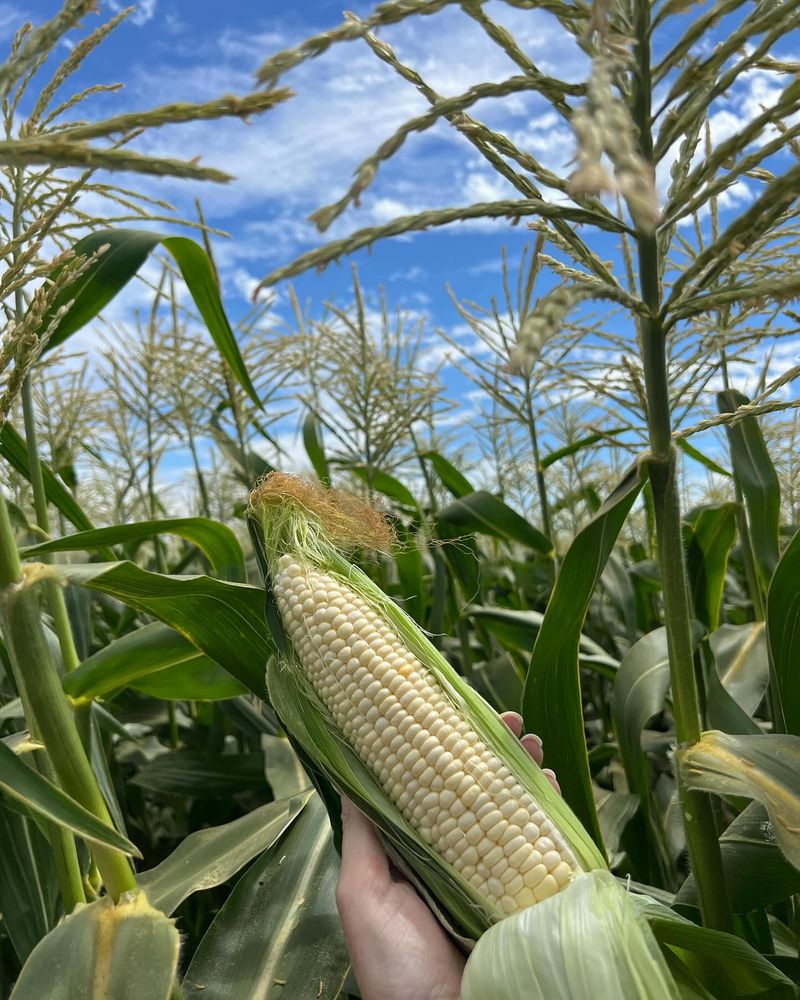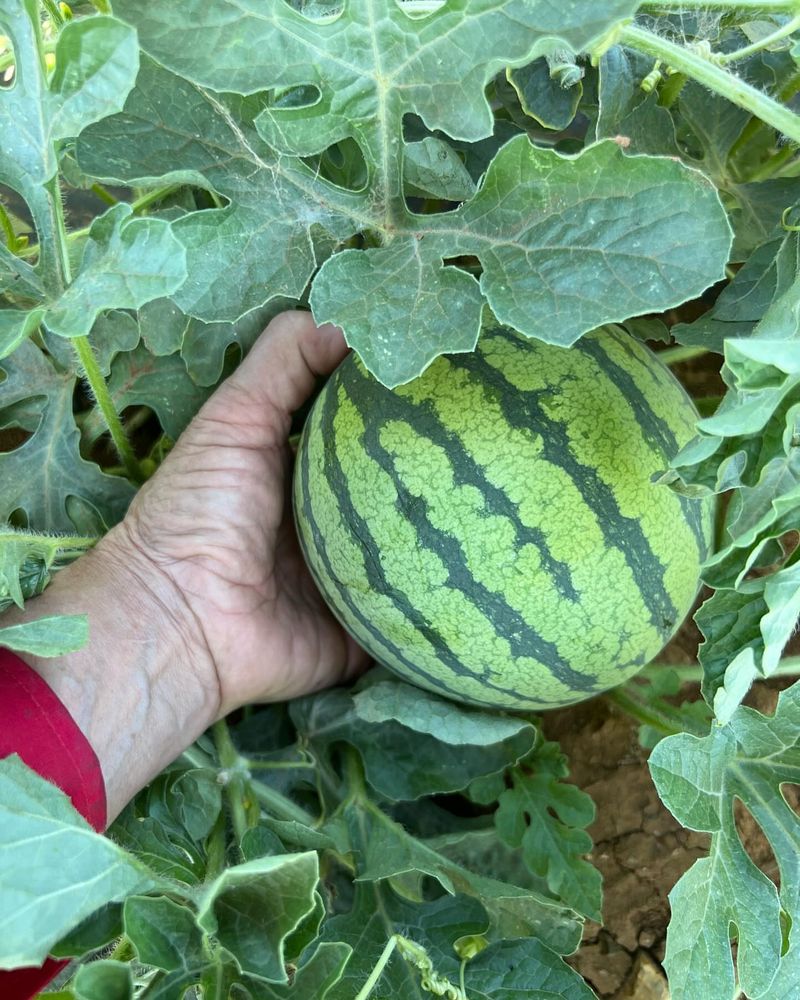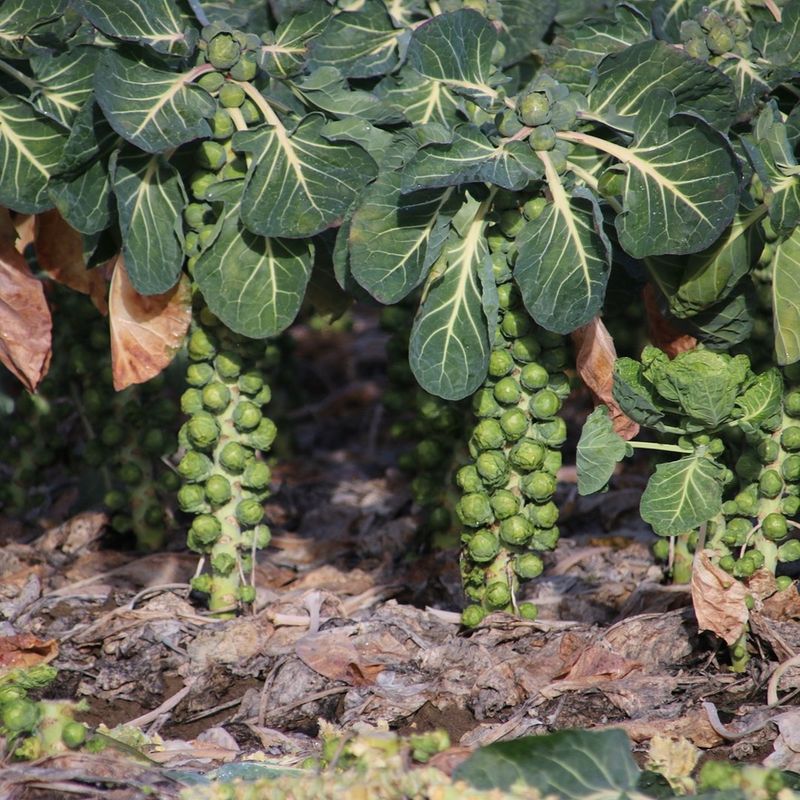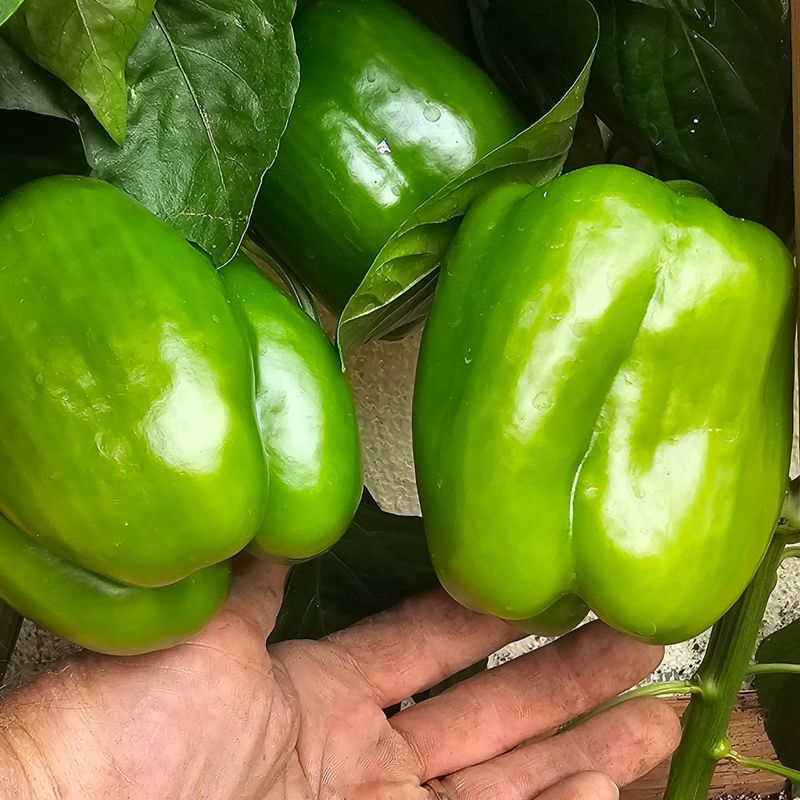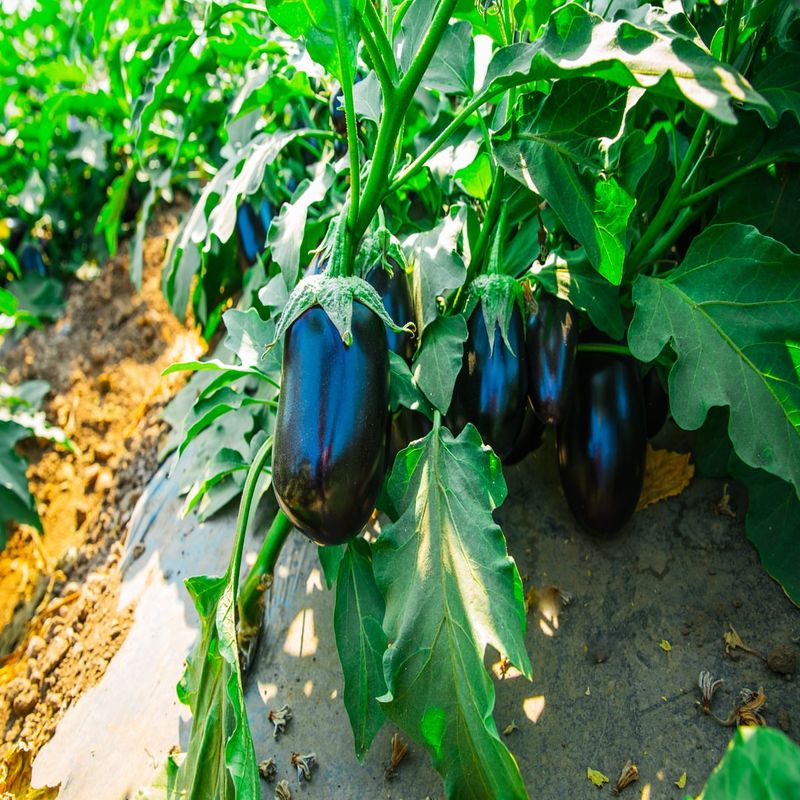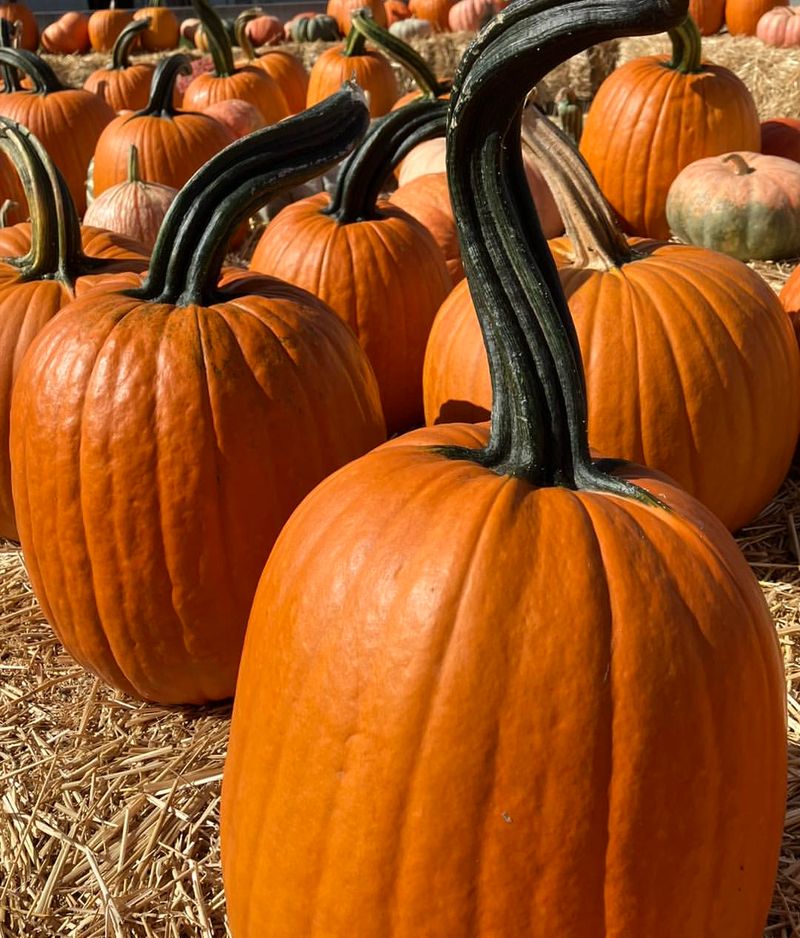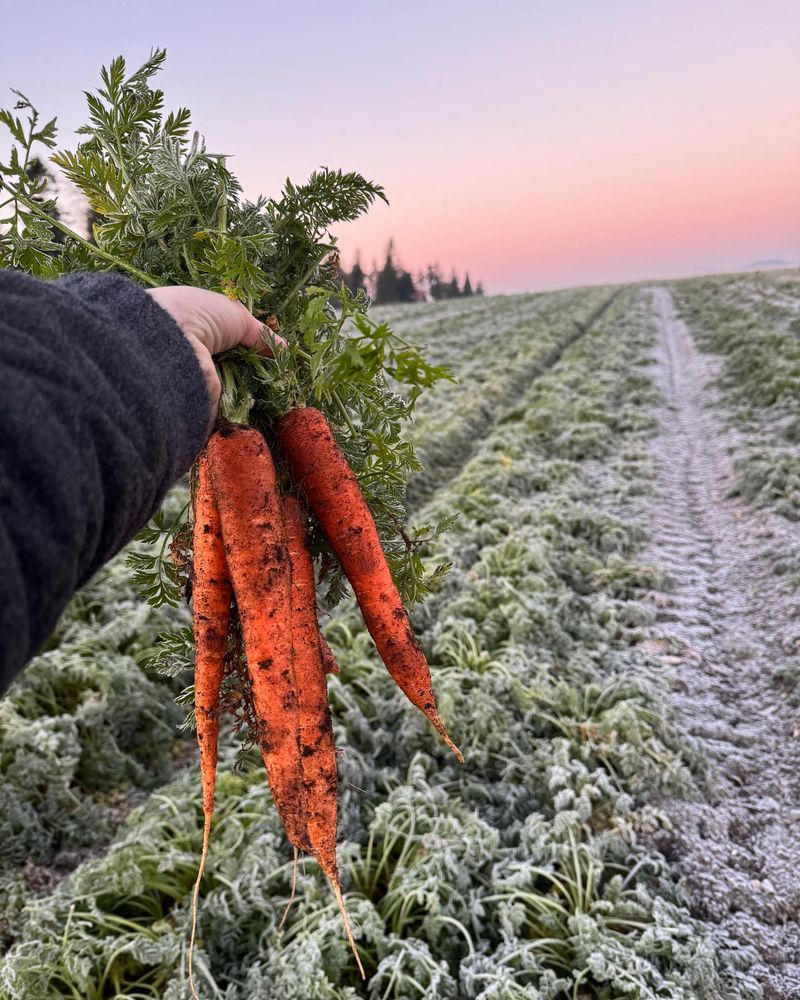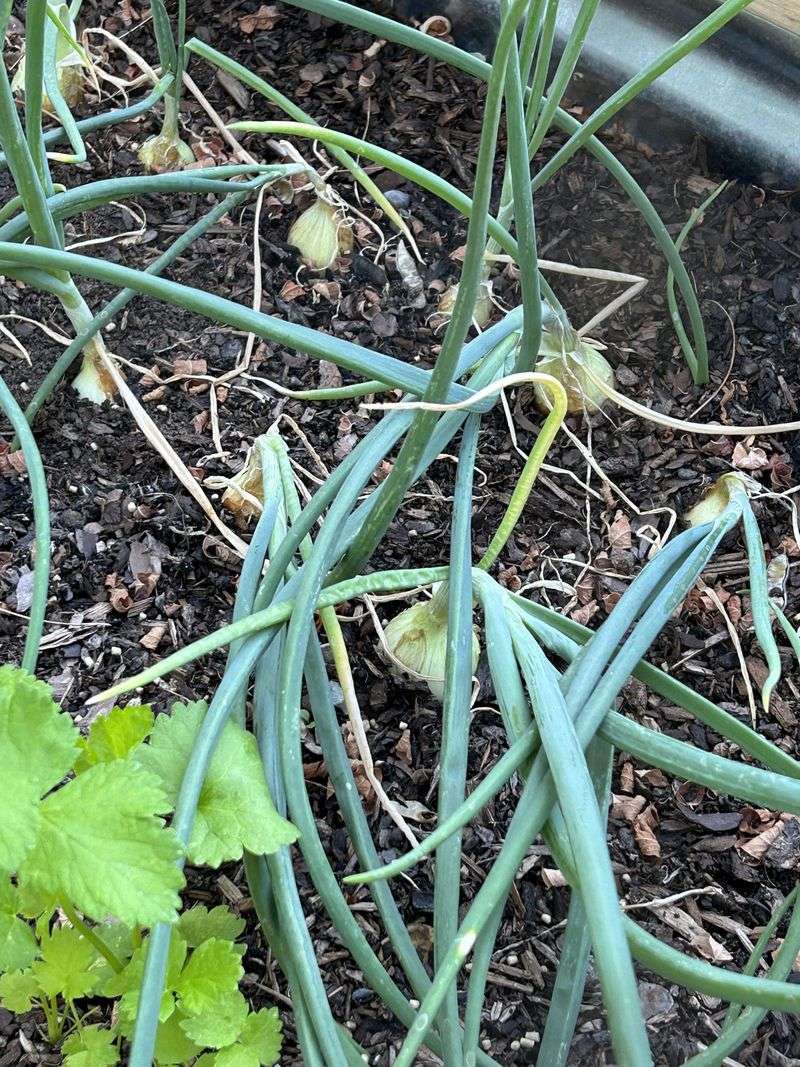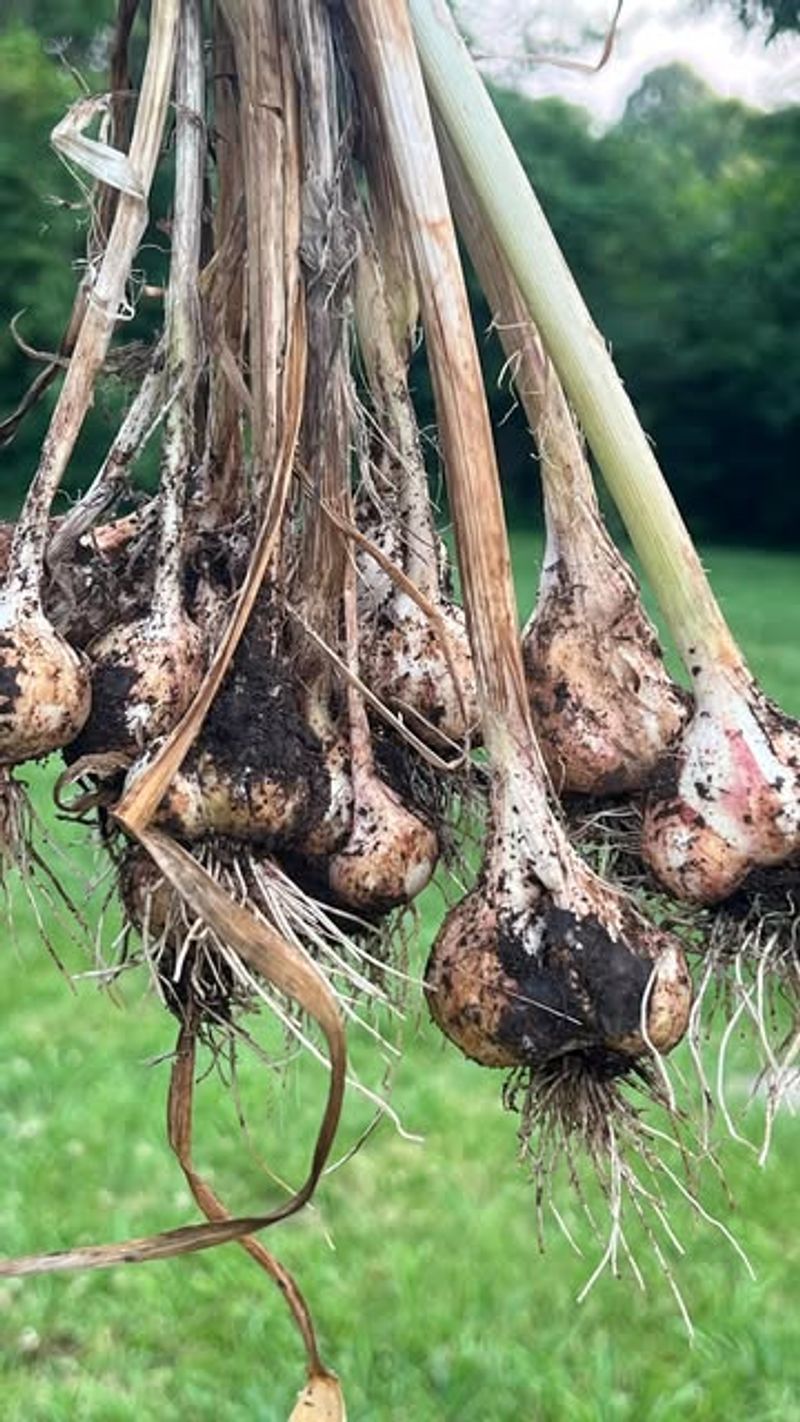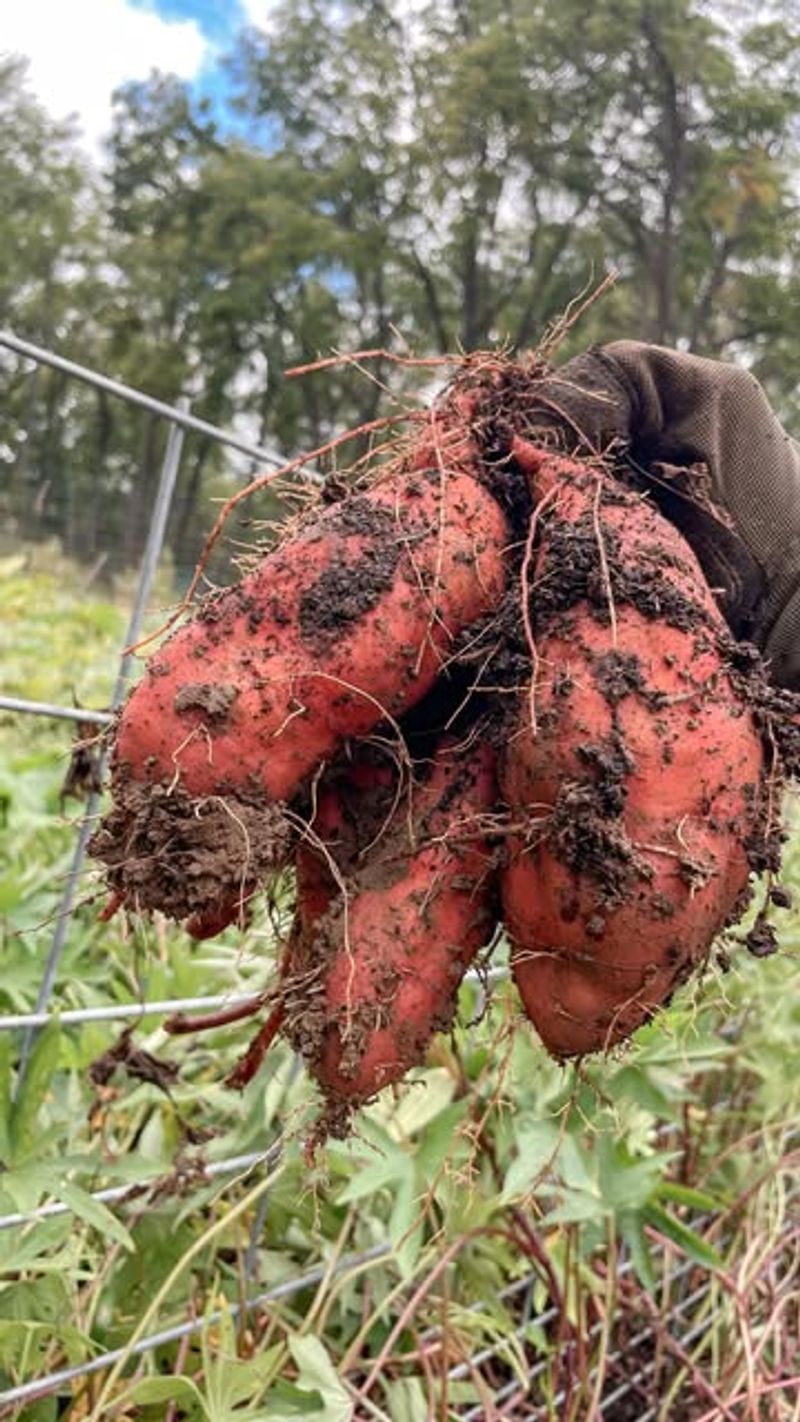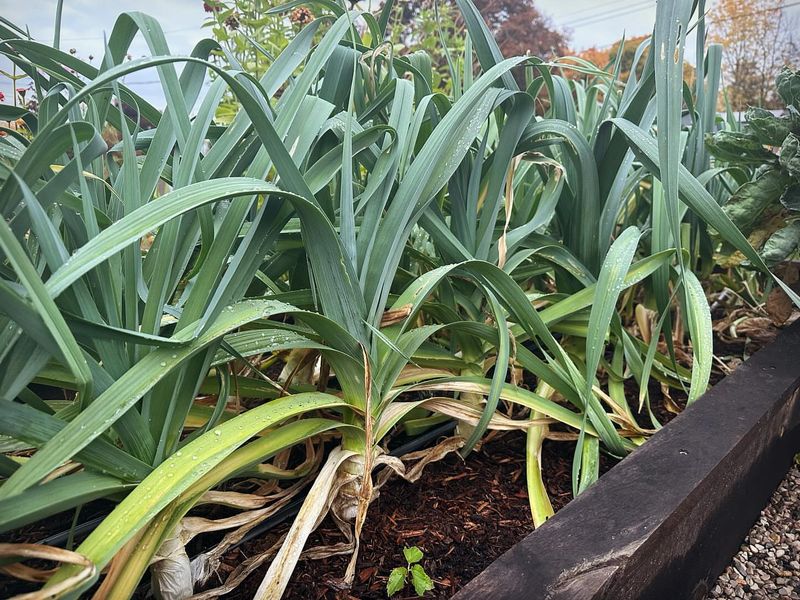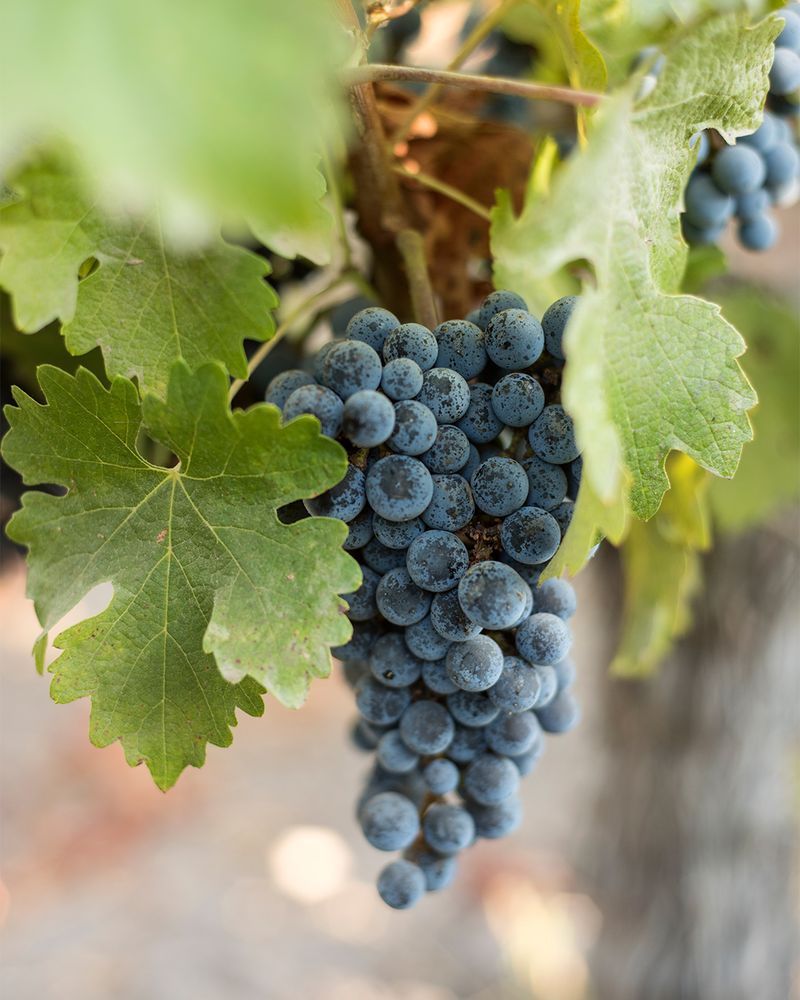It’s tempting to pick the first ripe-looking fruit or veggie, but in Pennsylvania gardens, patience pays off. Harvest too early and you lose out on flavor, texture, and size—not to mention all that growing effort.
These garden favorites need just a little more time on the vine or in the soil to hit their peak. Hold back the urge, and your harvest will taste a whole lot better.
1. Tomatoes Worth The Wait
Nothing beats the flavor of a perfectly ripened tomato. While those green orbs might look big enough to pick, patience pays off with sweeter taste and better texture.
Wait for tomatoes to develop their full color – whether red, yellow, or purple – and feel slightly soft when gently squeezed. Pennsylvania’s growing season typically allows tomatoes to ripen fully on the vine through September.
2. Winter Squash Needs Full Maturity
Butternut, acorn, and other winter squashes develop their signature sweetness only when fully mature. Harvesting too soon means bland flavor and poor storage quality.
Look for hardened skin that resists puncture from your fingernail. The stems should be dry and corky, not green and soft. Most Pennsylvania gardeners find late September to October ideal for harvesting these sturdy vegetables.
3. Sweet Corn’s Perfect Moment
Many eager gardeners pull ears too soon, missing corn’s peak sweetness. The kernels should be plump and produce a milky liquid when punctured with your thumbnail.
Feel for completely filled-out ears with dry, brown silks at the top. Pennsylvania’s summer heat creates perfect conditions for sweet corn, but timing harvest within a 2-3 day window makes all the difference between good and extraordinary flavor.
4. Watermelons Require Patience
Cracking open an underripe watermelon leads to major disappointment. These summer favorites need their full growing period to develop sweetness and that perfect crisp texture.
Look for the curly tendril nearest the fruit to brown and dry out completely. The bottom spot where the melon rests on soil should turn from white to creamy yellow. Pennsylvania’s warm summer days help watermelons reach their sweet potential by late August.
5. Brussels Sprouts Improve After Frost
Many Pennsylvania gardeners miss out on the best Brussels sprouts by harvesting too early. These mini cabbages actually improve in flavor after experiencing a light frost or two.
The cold temperatures convert starches to sugars, creating a sweeter, nuttier taste. Wait until after the first fall frosts, usually late October to November in Pennsylvania, when the sprouts are firm and 1-2 inches in diameter.
6. Peppers Gain Color And Flavor
Green bell peppers are actually unripe! Many gardeners don’t realize that letting peppers mature longer transforms them into sweeter, more nutritious red, yellow, or orange versions.
While perfectly edible when green, allowing peppers to fully ripen increases their vitamin C content dramatically. Pennsylvania’s growing season often allows peppers to reach full color by late August through September if you can keep the plants healthy.
7. Potatoes Need Full Skin Development
Digging potatoes too early results in thin-skinned tubers that don’t store well. The key sign of readiness is when the plant’s foliage begins to yellow and die back naturally.
For storage potatoes, wait until most vines are dead. The skins should feel firm and not easily scrape off with your thumb. Pennsylvania’s moderate summer temperatures create excellent conditions for potato growing, with main crop varieties ready by late August.
8. Eggplants At Peak Glossiness
Many gardeners struggle with timing eggplant harvests. The trick is looking for fruits with glossy, tight skin that springs back when gently pressed. Dull skin means overripeness.
Harvest when the eggplants reach full size but before the seeds inside develop and darken. Pennsylvania’s warm summer days help eggplants thrive, with peak harvest usually occurring in August through early September.
9. Pumpkins For Perfect Carving
Halloween enthusiasm might tempt early pumpkin picking, but patience ensures better quality and longer-lasting jack-o’-lanterns. The stem should be dry and woody, not green and soft.
The pumpkin’s skin should be hard enough to resist puncture from your fingernail. Most Pennsylvania pumpkins reach peak ripeness from mid-September through October, perfectly timed for fall festivities and cool storage conditions.
10. Carrots Sweeten After Frost
Fall-planted carrots develop incredible sweetness when exposed to cold temperatures. The frost triggers the roots to convert starches to sugars as a natural antifreeze mechanism.
Many Pennsylvania gardeners actually leave carrots in the ground until after the first few frosts. With a layer of mulch, you can continue harvesting sweet, crisp carrots well into November or even December in milder Pennsylvania winters.
11. Onions Need Fallen Tops
Pulling onions too early results in smaller bulbs that don’t store well. The key harvest indicator is when about half to three-quarters of the tops have naturally fallen over and begun to yellow.
This signals that the onion has stopped growing and is beginning to form the protective outer layers needed for storage. Pennsylvania’s growing conditions typically bring onions to maturity by late July or August, depending on when they were planted.
12. Parsnips Develop Sweetness With Cold
Hardly anyone harvests parsnips too early because they’re one of the most cold-tolerant vegetables in Pennsylvania gardens. Their flavor actually improves dramatically after exposure to freezing temperatures.
The cold converts starches to sugars, creating a sweet, nutty flavor that’s missing in early-harvested roots. Many Pennsylvania gardeners leave parsnips in the ground through winter, harvesting as needed until early spring thaws.
13. Garlic Requires Perfect Timing
Harvesting garlic is a balancing act in Pennsylvania gardens. Pull it too early and the bulbs will be small with thin wrappers. Wait too long and the heads begin to separate.
The sweet spot comes when the lower third to half of the leaves have turned yellow or brown. Usually occurring in July for most Pennsylvania gardens, this timing ensures well-formed bulbs with enough protective layers for proper storage.
14. Sweet Potatoes Need Full Season
These tropical-origin roots require Pennsylvania’s full growing season to develop their signature sweetness and size. Most varieties need at least 90-120 days of warm weather.
Wait until just before frost for maximum yield, usually late September to early October in Pennsylvania. The leaves may start yellowing naturally, but often the first light frost warning is your signal to harvest before cold damages the roots.
15. Leeks Withstand Cold For Extra Flavor
Leeks are incredibly cold-hardy and actually improve with exposure to light frosts. Their mild onion flavor becomes sweeter and more complex after cold temperatures.
Many Pennsylvania gardeners harvest leeks progressively through fall and winter. With proper mulching, leeks can remain in the garden through Pennsylvania’s winter, allowing for fresh harvest even when snow covers the ground.
16. Grapes Develop Full Sweetness Late
Backyard grape growers often pick too early, missing the peak flavor potential. Unlike store grapes, homegrown varieties won’t continue ripening after harvest.
Test by tasting – the seeds should be brown, not green, and the flavor should be sweet without excessive tartness. Pennsylvania’s growing season typically brings grapes to perfect ripeness in September, with exact timing varying by variety and local climate conditions.

